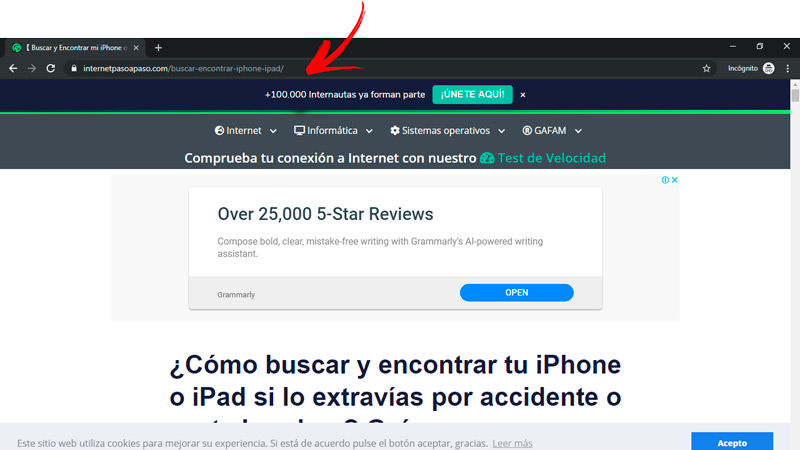
Index:
UPDATED ✅ Do you want to know what a Web URL is and what it is used for when browsing the internet? ⭐ ENTER HERE ⭐ and learn everything ✅ EASY and FAST ✅
Often when we read an article on the web, they suggest that we can expand the information or find out the source from which the data was taken. This link is usually shown with blue letters (pay attention that a hand automatically appears with the index finger pointing up).
Sometimes the only thing we can understand is the first part, in which there is a name of an Internet site that continues with a slash and the combination that we mentioned before.
This is nothing more than a “URL”this acronym refers to the English words ORniform Rsource Locator, which translated into Spanish would be “Uniform Resource Locator”. In this article we will show you everything you need to know about the different URLs in computing and on web pages so that you have no doubts or fears when clicking on these links.
How are URLs ranked and how is each one different?
First of all, we should differentiate a URL from a URI (these are the acronyms for ORniform Rsource Yodentifier, Unique Resource Identifier in Spanish). Without going into too much detail, a URI contains a URL but never the other way around. The URL can change while a URI never changes. Sometimes a URL is a URI.
Many people confuse these terms and how we want to inform you correctly so that you do not have problems in the future when you are working with these issues.
Clarified this point, we can say that a URL It is divided into two large groups:
semantic URL
They are those links in which they have a assigned format much easier to understand in a simple reading. This is used to see the location of a particular page within the website.
They are also called friendly urlssince what is sought is that the user can easily remember the URL, thus discarding numbers, signs and other characters.
non-semantic URL
This resource locator does not have a simple logic in its reading and it reflects the specific address in which it reflects where you can find, within an internet site, the related article in the location of that type of information. It is not highly recommended for SEO because Google rewards friendly URLs.
What are the parts or elements of a “Uniform Resource Locator”? examples
Within the Uniform Resource Locator there is, like all things in computing, its well defined and detailed parts. Each one fulfills an important function within a scheme in which you cannot get anything out of this structure since each of these parts connects to the next.
Next, we will detail what each of these sections are in the structure and we will name them in their order in which they appear in a URL:
HTTP (Hypertext Transfer Protocol)
Between the server on which the website we want to see is hosted and the browser we have, there is a communication protocol in which the rules are defined so that between our browser and that server they can communicate with each other efficiently.
You will have noticed that in some URLs “https” appears, that is, an “s” is added at the end. This means that the protocol with which we are working is safe.

Two points
The colon is a way to separate the communication protocol from the rest of the web address.
Right slanted slashes
It is necessary to clarify that the two bars must be inclined to the right (//) since if they were in another direction they would not work and a communication between the browser and the server would not be found. They serve to notify the address that we want the server to contact our computer.
Subdomain
The most common among the subdomains is the “www” (World WSDI Web), this is a set of protocols that serve for the organization within the computer system. There are addresses in which this subdomain does not appear, which does not generate any problem when communicating with the server.
Index.html
Now, it’s time to tell the server what is the file we want to see or interact (here is what is generally called the domain of the Internet page). It can also be written as “default.html” either “index.htm“.
Your TLDs extension is the final part of the domain, and what it shows us is what kind of URL it is. To give some examples there are generic top level extensions like “.com” either “.net”, geographic extensions can be found “.it is” (from Spain) or “ru” (from Russia), or related to education “.edu”.
directory or folder
This part of a URL is to tell the server what part of the page we want to have on our screens.

Route, also called page
It is the file that we want to see inside the server. It’s the same as with Windows or other folder-based system.
Label
It is related to the symbol “#” and it serves to give a specific order within the page of the directory that we have asked the server to see.
We hope this post has been helpful to you and don’t hesitate when you see those phrases in blue that seem out of context of what we are reading
Computing